Intro
Learn how to remove an intrauterine device (IUD) safely with our step-by-step guide, covering IUD removal procedures, risks, and aftercare, including hormonal and copper IUD types, to ensure a smooth and complication-free process.
The intrauterine device, commonly referred to as an IUD, is a popular form of long-term birth control for women. It is a small, T-shaped device that is inserted into the uterus by a healthcare provider, where it can remain for several years, depending on the type. However, there may come a time when a woman decides she wants to have the IUD removed, whether it's because she's experiencing side effects, wants to try to get pregnant, or simply no longer needs birth control. Removing an IUD is a relatively straightforward process that can be performed by a healthcare provider.
The decision to remove an IUD should be made after careful consideration and consultation with a healthcare provider. It's essential to understand the reasons behind the removal and what to expect during and after the procedure. Women may choose to have their IUD removed for various reasons, including plans to start a family, discomfort or side effects, or simply because the device has reached the end of its effective lifespan. Regardless of the reason, it's crucial to have the removal performed by a qualified healthcare provider to minimize the risk of complications.
The process of removing an IUD typically begins with a consultation with a healthcare provider. During this appointment, the provider will discuss the removal process, address any concerns or questions the woman may have, and perform a pelvic exam to locate the IUD strings. The strings are the thin, thread-like extensions of the IUD that hang down from the device into the vagina, allowing for easy removal. If the strings are not visible or palpable, the provider may use a special instrument to help locate them. Once the strings are located, the provider will gently pull on them to remove the IUD from the uterus.
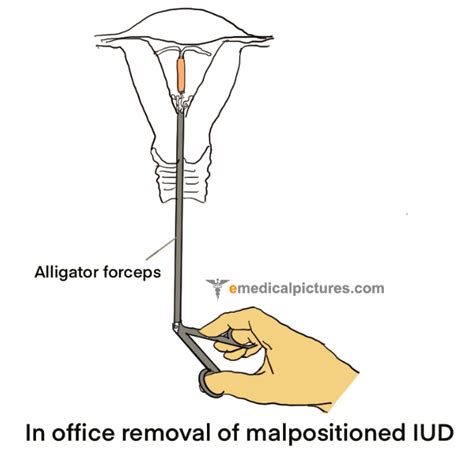
Preparation for IUD Removal
Preparation for IUD removal is relatively straightforward. Women are usually advised to schedule the removal procedure when they are not menstruating, as this can help minimize bleeding and discomfort. Additionally, it's recommended to avoid intercourse or use a backup form of birth control for a week before the removal to prevent pregnancy. On the day of the removal, women should wear comfortable clothing and be prepared to spend about 30 minutes to an hour in the healthcare provider's office.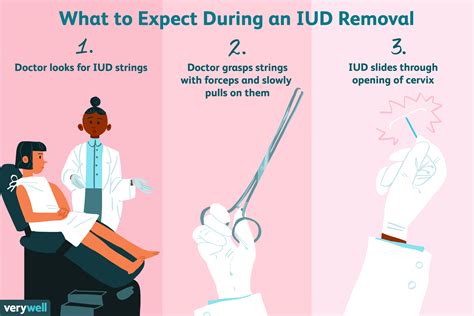
What to Expect During the Removal
During the IUD removal procedure, the healthcare provider will first perform a pelvic exam to locate the IUD strings. If the strings are visible, the provider will gently pull on them to remove the device. If the strings are not visible, the provider may use a special instrument, such as a speculum or forceps, to help locate and remove the IUD. The removal process typically takes only a few minutes, and women may experience some mild discomfort or cramping during the procedure. To minimize discomfort, the provider may recommend taking an over-the-counter pain reliever, such as ibuprofen, about an hour before the procedure.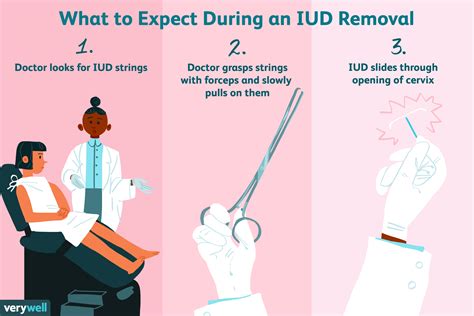
After the Removal
After the IUD removal, women may experience some mild bleeding or spotting, which can last for several days. They may also experience some cramping, which can be managed with over-the-counter pain relievers. It's essential to follow the healthcare provider's instructions for post-removal care, which may include avoiding heavy lifting, strenuous exercise, or intercourse for a few days. Women should also be aware that they can become pregnant immediately after IUD removal, so they should discuss birth control options with their healthcare provider if they do not wish to become pregnant.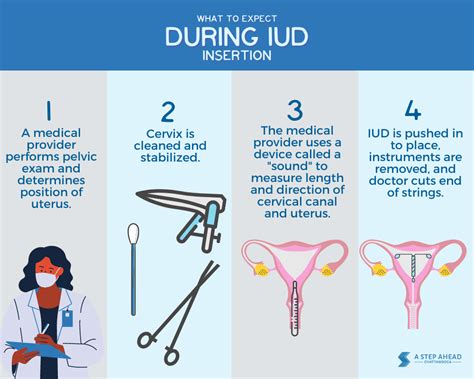
Risks and Complications
While IUD removal is generally a safe procedure, there are some potential risks and complications to be aware of. These can include infection, perforation of the uterus, and expulsion of the IUD. In rare cases, the IUD may become embedded in the uterine wall, requiring surgical removal. Women should discuss these risks with their healthcare provider and report any symptoms, such as severe pain, heavy bleeding, or fever, immediately.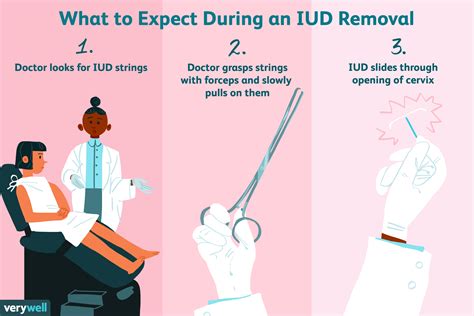
Benefits of IUD Removal
Removing an IUD can have several benefits, including the ability to become pregnant, reduction of side effects, and freedom from the device. Women who have their IUD removed may experience an improvement in their overall quality of life, particularly if they were experiencing side effects such as heavy bleeding, cramping, or mood changes. Additionally, removing an IUD can be a liberating experience for women who no longer need or want birth control.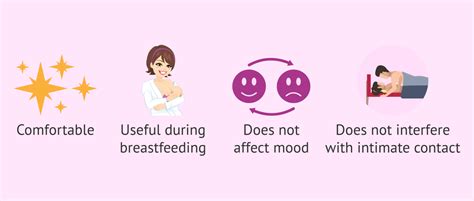
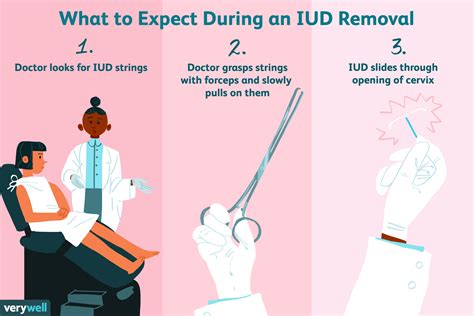
Conclusion and Next Steps
Removing an IUD is a relatively straightforward process that can be performed by a qualified healthcare provider. Women should carefully consider their reasons for removal and discuss their options with their provider. After removal, women can expect some mild bleeding or spotting and may need to take steps to prevent pregnancy if they do not wish to become pregnant. By understanding the process and benefits of IUD removal, women can make informed decisions about their reproductive health and take control of their bodies.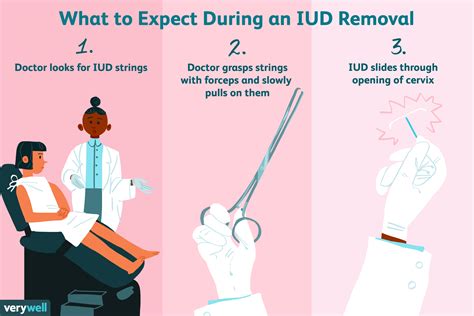
We invite you to share your thoughts and experiences with IUD removal in the comments below. If you have any questions or concerns, please don't hesitate to reach out to your healthcare provider. Additionally, if you found this article informative and helpful, please consider sharing it with others who may be considering IUD removal.
What are the risks associated with IUD removal?
+The risks associated with IUD removal include infection, perforation of the uterus, and expulsion of the IUD. In rare cases, the IUD may become embedded in the uterine wall, requiring surgical removal.
Can I get pregnant immediately after IUD removal?
+Yes, women can become pregnant immediately after IUD removal. If you do not wish to become pregnant, you should discuss birth control options with your healthcare provider.
How long does it take to remove an IUD?
+The IUD removal procedure typically takes only a few minutes. However, women should plan to spend about 30 minutes to an hour in the healthcare provider's office to allow for preparation and post-removal care.
